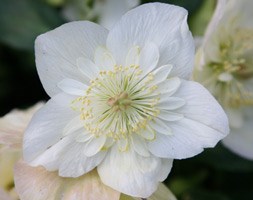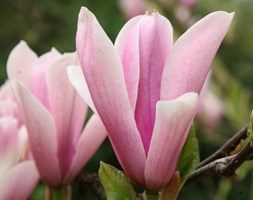Price reductions at Crocus
by Sarah - October 29th, 2014.Filed under: Crocus, Price Reductions.
Crocus reduced the price on these products today
Pelargonium ‘Lawrenceanum’ (species pelargonium) was £17.99 now £12.99
Position: full sun or partial shade Soil: fertile, well-drained soil Rate of growth: fast growing Flowering period: May to November Flower colour: mauve-pink Other features: aromatic foliage Hardiness: tender The white-edged, purple flowers of this species pelargonium, appear in open sprays from early summer to the first frosts of autumn. Not only do they add an opulent feel to the seasonal display, but they also have a heady scent in the evenings. This is available as a collection of three plants. They will be dispatched directly from our specialist grower of rarer pelargoniums and will be sent out in 6.5 cm peat pots. Garden care: As soon as you receive the plants you will need to pot them up into larger pots straight away. Water when necessary, but let the soil get reasonably dry in between to avoid overly wet conditions. If you want more flowers, then feed your plants once a week with a weak solution of a potash-rich liquid fertiliser, such as Tomorite. Deadheading the spent flowers will also encourage more to form.
Helleborus niger Harvington hybrids double-flowered (Christmas rose hellebore) was £18.99 now £17.99
Position: partial shade Soil: heavy, neutral to alkaline soil Rate of growth: average Flowering period: January to February Flower colour: white Other features: all parts of the plant cause severe discomfort if ingested; the sap may cause skin irritation Hardiness: fully hardy Gorgeous, double white, bowl-shaped flowers from January to February (occasionally earlier) and clumps of leathery, dark green leaves. This pretty Christmas rose looks great planted in bold groups towards the front of a partially shady mixed border. Although it prefers a heavy, neutral to alkaline soil, once established it will tolerate drier conditions. Garden care: Add lots of well-rotted leaf mould or organic matter to the planting hole. Apply a generous 5-7cm (2-3in) mulch of well- rotted organic matter around the base of the plant in autumn and provide a top-dressing of general fertiliser each spring. Please note: Delivery before Christmas can only be guaranteed if ordered by December 20th
Magnolia ‘Heaven Scent’ (magnolia) was £39.99 now £29.99
Position: full sun or partial shade Soil: moist, well-drained, acidic soil Rate of growth: average Flowering period: April to June Hardiness: fully hardy A spring flowering, deciduous magnolia with an upright habit when young, later spreading. The goblet-shaped, fragrant blooms are flushed with pale pink on the outside, and appear from mid spring to early summer, avoiding most frosts. This magnolia is compact and therefore one of the best available for the small garden. Garden care: Plant in a sheltered spot, away from strong winds. Requires minimal pruning. Remove any broken, diseased or crossing branches in midsummer. The best time to plant is in April, adding plenty of peat to the planting hole, in a sheltered spot. Mulch in spring with manure and leafmould, especially on dry soils.
apple ‘Discovery’ / ‘James Grieve’ / ‘Sunset’ (family apple) was £49.99 now £39.99
Position: full sun Soil: fertile, well-drained soil Rate of growth: average to fast-growing Ultimate size on MM106 rootstock: 5.5 x 5.5m (18 x 18ft) Flowering period: April and May Other features: delicious dessert apples Hardiness: frost hardy (may need winter protection, particularly in colder parts of the country) Pollination Group: C – flowering late season Family apple trees are ideal where space is limited as there is no need to worry about pollination partners and you can pick several different varieties from the same tree. On this fab family tree, there are three grafted branches, each branch will produce one of the following varieties: ‘Discovery’ – a profusion of white flowers in spring are followed by crisp, juicy, red dessert apples. The tree forms a natural dome shape and the fruits from this tree keep well for several weeks after they’re harvested in mid August. ‘James Grieve’ – producing crisp and juicy, red-flushed, green apples that have remained comnsitenetly popular since they were first introduced in 1893. A reliable cropper, the apples can be used for cooking or eating and can be harvested from September. ‘Sunset’ – showing a good resistance to disease, the red and orange-flushed yellow apples have a tart cox-like flavour and are produced in abundance. Ready to pick in September. Garden care: Keep the base of the tree weed free, fertilise at the beginning of each year and water regularly during hot, dry spells. Remove damaged or crossing branches during the dormant season. Pollination Information: As these trees are made up of several different varieties that can cross pollinate freely, you will not need another pollinating partner.










